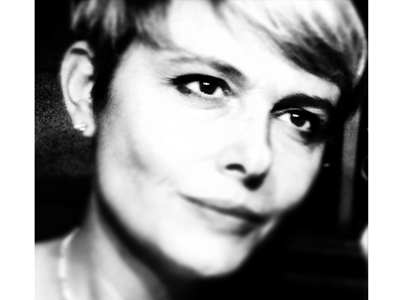Palladian Basilica, Piazza dei Signori, Vicenza, Italy
I had a wish.
I wanted to be among the first visitors at the Museum of Jewellery in Vicenza.
Last year, on December 24, I purchased the ticket. It was number 3. Symbolically prophetic, I thought, while hiding in my hand the precious memento. The box office and the adjacent book shop were very small, and when I finally handed my ticket to the officer, I wondered if I was going to have to readjust my (big) expectations down to the size of the entrance. But in the spectacular rooms of the Palladian Basilica dedicated to the museum, a curatorial tour de force was waiting for me.
The main entrance is up the stairs in front of me, and from there I can distinguish the first two rooms. I find myself a bit disoriented—I had counted on seeing impressive spaces, not tiny rooms—and almost miss, to the left of the entrance, the very first exhibit. This fascinating Zip by Van Cleef is meant to encapsulate the perfect encounter between research, design, and luxury; it has been strategically placed there by Alba Cappellieri, the museum director, to welcome the public.
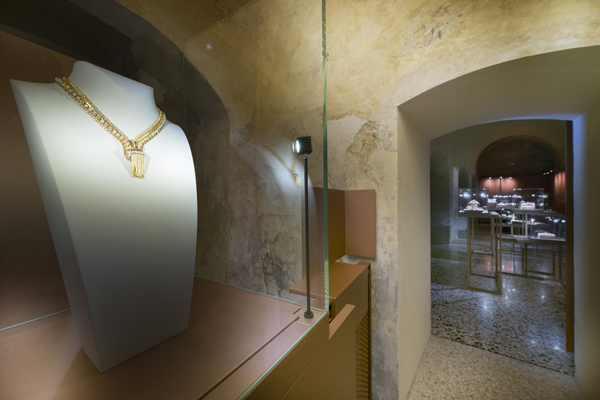
When I step in, I expect to find artifacts organized along chronological partition in a conventional layout. We are used to being led by the hand by familiar signage and recognizable exhibition structures. Anything that challenges the expected creates suspicion and mistrust. This writer, it must be admitted, was not immune to a certain form of discombobulation, and visited the nine exhibition areas like a robot, encountering, one after the other, worlds that seemingly did not communicate with each other.
Something was not clear to me. I went down to the bookstore and bought several catalogs by Marsilio, the company that also put out Gioiello &, the museum’s own launch publication.
I would come back. I had an ambiguity to resolve.
I hoped that studying the curators’ proposals in print would guide my steps in a future visit, and help me make sense of the unusual purpose of this museum, created to promote and support the goldsmith culture that, since the Middle Ages, characterizes the city of Vicenza.
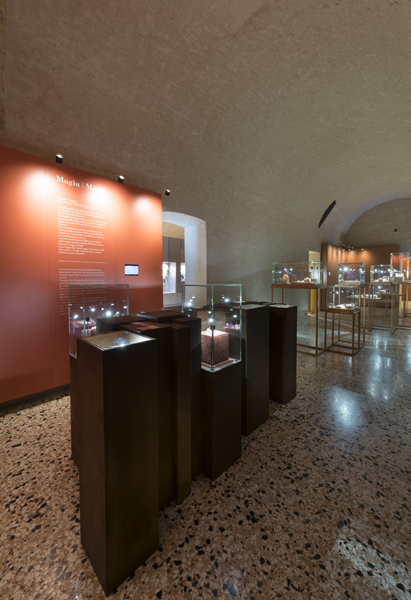 And I was right. When I came back to visit the museum for the second time and met Cappellieri, I was in a much better position to engage with the implications and meanings of the project.
And I was right. When I came back to visit the museum for the second time and met Cappellieri, I was in a much better position to engage with the implications and meanings of the project.
“Jewellery, on its own, universal and unique, does not exist, but there are different ideas of jewellery, linked to a certain time, a specific culture and a taste – to the history of humankind, in fact,” [1] writes Cappellieri, one of the architects of this museum’s novel curatorial plan. Her words serve as an excellent definition and a manifesto of the project.
Her ambitious project proposes nothing less then a new approach to the divulgation of jewelry, and jewelry culture. Cappellieri invited ten important players in the jewelry field to give their own interpretion of jewelry and of its many facets. In turn, these ten curators—Aldo Bakker, Gijs Bakker, Bianca Cappello, Ida Caruso, Franco Cologni, Deanna Farneti Cera, Graziella Folchini Grassetto, Paolo Maria Guarrera, Stefano Papi, and Maura Picciau—took up the challenge of choosing work by 30 jewelry makers for “their” rooms.
To achieve and implement this institutional project took seven years of continuous work, three of them just to let the curators of the various rooms talk among themselves, and understand one another. “Attending the meetings between big exponents of tradition and advocates of the contemporary was priceless,” says the director. The curators also worked independently, making their personal choices, trying to showcase different aspects of jewelry.
The Fair of Vincenza and the city itself, with a considerable synergistic and economic effort, sponsored the project to the tune of around one million euros. They felt that Italy, a cradle of art, must put itself in a position to compete on the international scene, and that the Museum of Jewellery in Vicenza could be the right starting point. Its new approach, they felt, would fill a space left open by other institutions. The museum does not have the infrastructure or vast collection of the Schmuckmuseum Pforzheim in Germany; nor can it really compare with the comprehensive multidisciplinary collections of the Museum of Fine Arts, Houston or, closer by, to CODA’s interactive programs. The museum it resembles most is probably the World Jewellery Museum in Seoul, Korea: Both are relatively small, and both try to propose an alternative way to “think” jewelry.
To better understand the peculiarities of the museum, we can start from the choice of the exhibition space. The Basilica Palladiana is a 15th-century building located in the central Piazza dei Signori in Vicenza, in north-eastern Italy. Designed by a young Andrea Palladio, the building originally served as the seat of government and housed a number of goldsmith shops on the ground floor. The building’s dual affiliation—to the world of politics and to the grind of workshop labor—seems extremely appropriate to a project that intends to present and explain the jewelry world in its complexity.
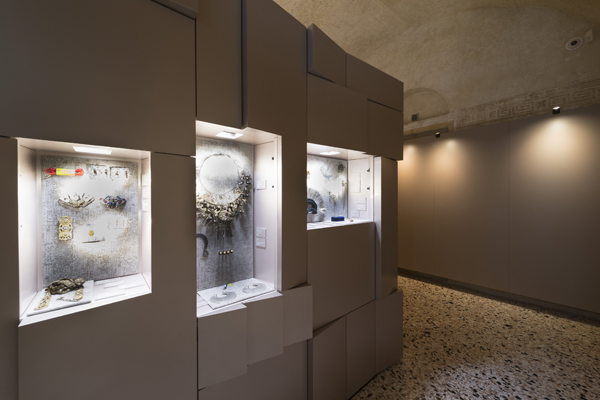
Such a majestic building—and what a small museum! While Cappellieri walked with me through the space, and explained to me the choices of the curators and the significance and value of the displays designed by Patricia Urquiola, this slight contradiction was at the forefront of my thoughts. Everything in the museum is intended to be somehow a provocation: the contrast between the dimension of the Palladian Basilica and the museum itself; the absence of a chronological partition within the exhibition rooms; the bombastic displays that seem to dominate the jewels; the hefty number of artworks displayed as compared, again, to the small rooms they are housed in. All this will put first-times visitor in a weird emotional state and, to some extent, distort their perception. During my second visit, however, what I want to call a sensory route made itself manifest. Let me walk you, as I was walked, through those nine rooms.
The first room, curated by Stefano Papi, is dedicated to jewelry as Symbol: as a sign of power, social status, identity, and memory, but also of devotion, feeling, or territorial belonging. It is meant to appeal to our sense of sight. The twinkle of French Princess Pauline Bonaparte’s parure overflows, the Sassoon crown shines (it belonged to an 18th-century merchant family whose empire spanned the Asian continent), and Barbara Cartland’s pearls spread their iridescence, the better to highlight the authority of those who wore them. As if to consolidate this idea of authority, all the showcases are extremely high (those containing objects of lesser provenance—objects of aristocratic taste, souvenirs, and Victorian mourning jewelry are on a lower level.)
Walking into the second room, titled Magic, one finds an even more bunched-up cluster of cases (curators: Maura Picciau and Paolo Maria Guarrera). The glass-topped cabinets are deeply recessed, forcing one to lean over them to discover amulets and talismans: hand-me-downs from Italy’s long and industrious love affair with superstition and the supernatural. The recesses are a clever touch: they suck the visitor’s attention into those magic objects and let you hear the sound of their bells and spells.
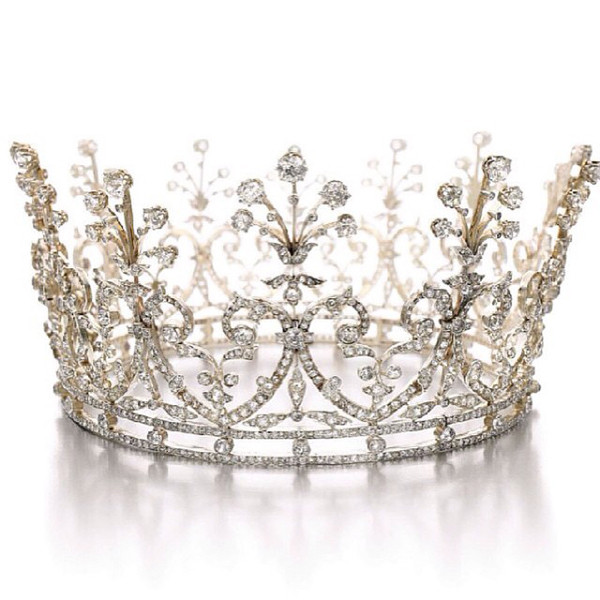 The third theme, curated by Bianca Capello, is dedicated to Function, and consists of a multifaceted partition wall with top-lit, window-like recesses. Buttons, buckles, chatelaines, brooches, hair clips, cufflinks—and Paolo Ulian’s toothbrush ring—are shown as if they were laid out in the compartments of a large closet.
The third theme, curated by Bianca Capello, is dedicated to Function, and consists of a multifaceted partition wall with top-lit, window-like recesses. Buttons, buckles, chatelaines, brooches, hair clips, cufflinks—and Paolo Ulian’s toothbrush ring—are shown as if they were laid out in the compartments of a large closet.
At this point, I realize that one of the most surprising aspects of the museum is its reliance on dramatic setups. The displays designed by Urquiola are meant to express, and exaggerate, each room’s narrative; and they reveal to an attentive eye a good part of what the curator wanted to express and the theme of the rooms. (Urquiola also designed a pattern for the velvet backings that line some of the cabinets: a maze of tiny lines, not unlike electrical circuits, in a fleshy color range.)
On the opposite side of the same room, Franco Cologni took care of the long Beauty showcase. His selection emphasizes high Italian craftsmanship: the glare, the materials, the forms and techniques that brought fame to goldsmith companies such as Gianpiero Bodino, Percossi Papi, Pasquale Bruni, Buccellati, Bulgari, Roberto Coin, Chantecler, Stefan Hafner, Enzo Liverino, Mattioli, Micheletto, Nardi, Pomellato, Ponte Vecchio Jewellery, Vendorafa Lombardi, and Vhernier. The sensual power of the jewels on display was overwhelming: I wanted to bite into those nuggets of craft to discover their taste.
The choices of Graziella Folchini Grassetto for the Art section give evidence of how, from the 1970s onward, international artists have renewed the intimate connections between art and jewelry. Gianpaolo Babetto, Gijs Bakker, David Bielander, Helen Britton, Iris Eichenberg, Beate Eismann, Karl Fritsch, Otto Künzli, Fritz Maierhofer, Stefano Marchetti, Bruno Martinazzi, Iris Nieuwenburg, Evert Nijland, Ted Noten, Francesco Pavan, Ruudt Peters, Katja Prins, Lucy Sarneel, Robert Smit, Graziano Visintin, Lisa Walker, and Petra Zimmermann are, in the curator’s opinion, all artists who embraced citation as their (post-modern) idiom. The selection highlights neo-naturalistic and neo-symbolist approaches, but also pays its dues to earlier, more formal research in geometric designs, following the historical avant-garde of the early 20th century.
Incidentally, the long list of artists should not be interpreted as mere name-dropping, but as a memorandum to all who won’t be able to visit within the next two years. This is a second particularity of the museum: everything is on loan and will only be there for that short period of time. After that, new selections made by new curators will replace the current ones. The lending policy established by the museum demands it, and encourages a rapid turnover in this not-so-permanent collection.
Constant renewal is also the name of the game in the next room, dedicated to Fashion (curator: Deanna Farneti Cera). It features pieces by Chanel, Dior, Ferre, and Givenchy, houses that, by commissioning timeless pieces from prominent artists, marked, jewel after jewel, the seasons and the vagaries of trends and fashions.
Design, curated by Gijs Bakker, is a vivid expression of the contemporary, shunning jewelry’s allegiance to gold and the adoration of skills. “I have never been interested in handmade things and I am, in fact, suspicious of their charm. It is the idea that matters and whether it is produced by me or by a machine nothing must detract from the underlying idea. Along with six historic examples of (semi-)industrial jewelry, all the designers presented here were able to develop a concept that was linked strongly to their industrial work but has all the ingredients of a successful jewelry design in terms of idea, materialisation, technology and wearability,” says Gijs Bakker, presenting the works of Hans Appenzeller, Lin Cheung, Dinie Besems, Tord Boontje, the Campana Brothers, Konstantin Grcic, Ineke Hans, Gina Hsu, Philipp Käfer, Otto Künzli, Michael Leung, Charles Marks, Alberto Meda, Ramon Middelkoop, Marc Newson, Rolf Sachs, Frank Tjepkema, Paolo Ulian, Hannes Wettstein, and, of course, his own.
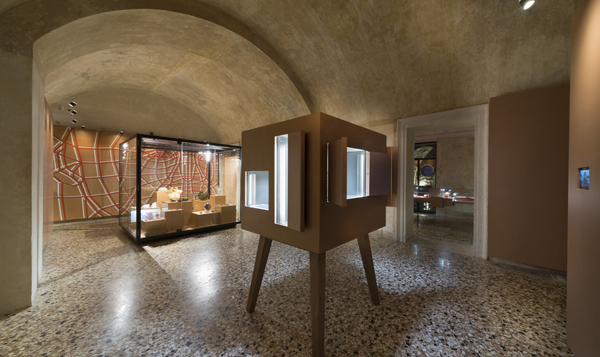
In the last hall stands a large ochre cube propped on splayed legs; each vertical face sports a couple of “windows” with hinged “shutters” that visitors are encouraged to open and close at will. Urquiola’s unusual design is inspired by the choices of curator Ida Caruso for this jewel Icons section. The “windows” open onto the distant, illustrious past and the revolutionary experimentations of our ancestors. If you open those shutters you will discover examples of Etruscan granulation, Roman micromosaics and work in gold foil— testimonies to the skills of our ancestors that continue to inspire modern makers.
The final piece in this multidimensional puzzle, titled Future and curated by Aldo Bakker, aims to sketch the future of the jewelry field by presenting recent materials and technologies under a huge crystal structure—almost an aquarium—where unusual creatures are floating.
Cappellieri’s mission treads a fine line between the educational and the spectacular and means to goad the curiosity of researchers, jewelry enthusiasts, and common visitors alike. Whoever that visitor may be, the museum’s semantic complexity, the heterogeneous language of its different environments, and the uninterrupted dialogue between past, present, and future require undivided attention: I needed to visit the museum twice, to hear Cappellieri’s explanations, and to study several catalogs before reaching a reasonable level of understanding of her purpose, and its method. But all the hard work is worth it. Once my mind was opened, I was able to see the connections within each room, and the resonances from room to room. Depending on one’s itinerary and state of mind, these connections will be something new and different at every visit.
This is not the easiest way to approach the wider public. Some visitors may come out of the experience feeling they have been misled, because they were not led by the hand. This institution is a newborn creature and needs time to evolve and grow up; to its credit, temporary exhibitions and targeted educational programs are already in the works. Meanwhile, 3,000 visitors in the first month of opening is a very encouraging response to a complex sensorial proposition.
INDEX Image: Museo del Gioiello at the Palladian Basilica, Vicenza, Italy, photo: Cosmo Laera
[1] From the Museo del Gioiello website: http://www.museodelgioiello.it
